AMR Technology: 5 Innovations You Should Know
Why AMR Technology Matters Now More Than Ever
As of 2025, Autonomous Mobile Robot (AMR) technology is entering a new phase of rapid adoption. This shift is driven by three key factors: the integration of AI technologies, stricter international safety standards, and growing efforts toward system integration standardization.
AMRs are no longer limited to simple material transport. They are evolving into essential infrastructure for smart factories. In this article, we break down the core technologies behind AMRs, recent advancements, market growth trends, and practical applications in smart manufacturing.
If you’re considering smart factory transformation or logistics automation, this is a must-read to stay ahead of the curve.
📌 What Is an AMR?
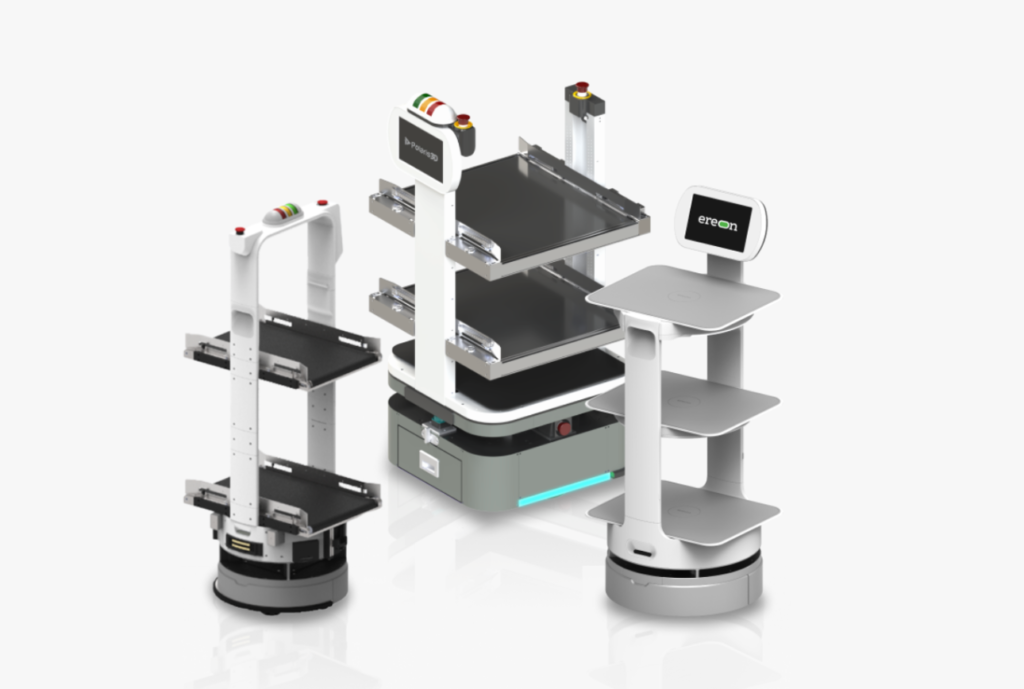
Going Beyond AGVs: The Rise of Autonomous Mobile Robots (AMR Technology)
An Autonomous Mobile Robot (AMR) is a robot capable of navigating, transporting, and performing tasks without relying on fixed rails or pre-installed markers. Unlike traditional Automated Guided Vehicles (AGVs), AMRs offer far greater flexibility and can move freely within dynamic environments.
Thanks to their adaptability, AMRs can quickly respond to changes in their surroundings—making them highly efficient in complex operations. Today, they are being deployed across a wide range of industries, including smart factories, logistics centers, hospitals, and hotels.
📌 AMR Market Size and Growth Outlook (AMR Technology)
The global autonomous mobile robot (AMR) market was valued at USD 2.8 billion in 2024. It is projected to grow at a compound annual growth rate (CAGR) of 17.6% from 2025 to 2034.
This strong growth is driven by rising demand in logistics and e-commerce, along with accelerating automation trends in manufacturing. To meet this surge in demand, AMR developers are focusing on advanced features such as AI-powered navigation and intelligent automation capabilities. (Resources: GMI, “AMR Market Outlook 2025–2034”, 2025.03 )
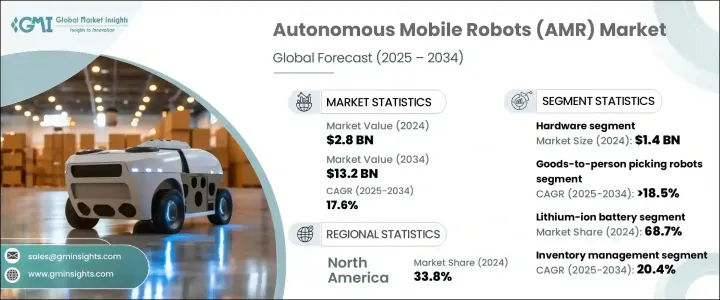
📌 5 Core Technologies Behind AMRs (AMR Technology)
1️⃣ High-Precision LiDAR Sensor Technology (AMR Technology)
LiDAR is one of the most essential sensors in AMRs, enabling high-precision mapping and navigation. It generates 3D point cloud data using laser pulses, allowing AMRs to build centimeter-level accurate maps of their surroundings.
This technology supports real-time path planning and obstacle avoidance through SLAM (Simultaneous Localization and Mapping). As a result, it is especially effective in flexible production lines and clean environments where precise, adaptive movement is critical.
(Source: Augto, “7 AMR Sensor Techs”, Feb 2025)
2️⃣ Obstacle Avoidance and Deep Learning–Based Perception (AMR Technology)
Obstacle avoidance is one of the most critical safety features in AMRs. It plays a decisive role in the overall performance of autonomous navigation. SMAR, developed by Polaris3D, is equipped with fast and highly accurate obstacle detection and avoidance technology designed to meet these requirements. This system uses 360-degree LiDAR to generate precise environmental maps. It then employs an RGB-D camera to detect obstacles in front of the robot and respond to them in real time.
An RGB-D camera combines a standard RGB camera with a depth sensor. This setup allows it to capture both color and distance information for each pixel. Thanks to this capability, SMAR can precisely detect the location and shape of obstacles. As a result, it ensures stable and reliable navigation—even in complex environments.
3️⃣ Safe Battery Technologies: LFP vs. Li-ion (AMR Technology)
Most AMRs today are powered by lithium-ion (Li-ion) batteries. These batteries are widely adopted due to their high energy density and fast charging capabilities. However, they come with a structural limitation: the risk of thermal runaway—a phenomenon linked to fire incidents in electric vehicles. In industrial environments, where humans and robots operate in close proximity, this risk becomes even more critical. Battery safety, therefore, is not optional—it’s essential.
To address this, Polaris3D’s autonomous robot SMAR uses LFP (Lithium Iron Phosphate) batteries, which offer superior safety and reliability. LFP batteries have excellent thermal stability, significantly reducing the risk of fire or explosion, even in high-temperature conditions. They also demonstrate exceptional durability under the long operating hours and high-frequency cycles required in industrial settings.
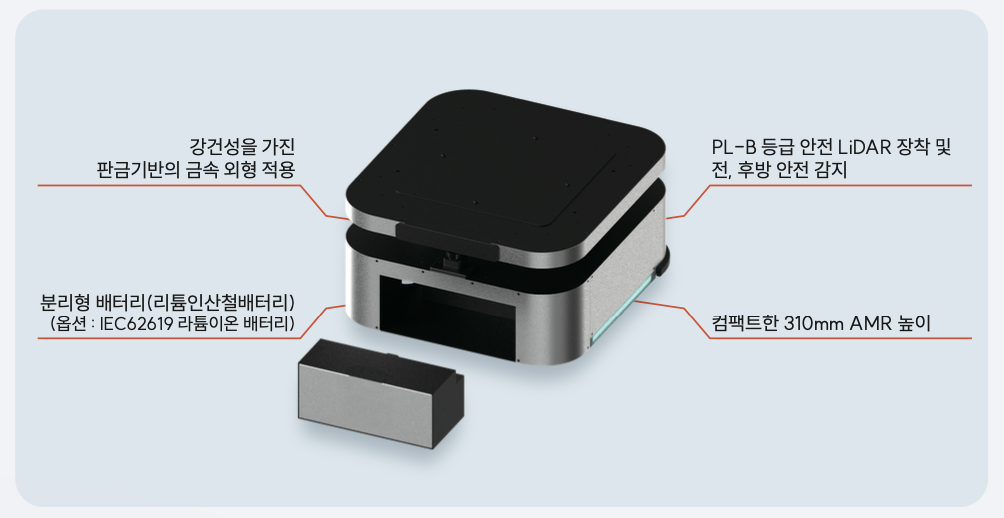
Additionally, LFP batteries offer several key advantages:
- High-capacity fast charging support: Enables maximum operational uptime when integrated with automatic docking and charging systems.
- Excellent recyclability: Even when battery performance degrades to around 80%, over 90% of capacity can be restored through recycling.
- Cost efficiency that lowers TCO: Long cycle life and low maintenance frequency make LFP batteries ideal for long-term industrial operation.
As a result, SMAR offers a safer and more efficient energy solution compared to robots using lithium-ion batteries. Its use of LFP technology makes it a sustainable and reliable platform for long-term operation across diverse industrial environments.
4️⃣ Integrated Control System (ACS: AMR Control System)
To enable full logistics automation, an Integrated Control System is essential. It serves as a core infrastructure that enables seamless coordination between AMRs and existing logistics equipment. In particular, cloud-based central control platforms allow operators to monitor and manage multiple AMRs in real time. They also provide a clear overview of the operational status of conveyors, lifts, and other logistics systems—greatly enhancing on-site efficiency.
Polaris3D offers its proprietary logistics control system, Nepler. This system enables real-time monitoring of robots and equipment. It also facilitates automated task generation. Nepler supports system integration and customization, and can manage logistics operations across facilities of any size. Ultimately, Nepler is more than just a monitoring tool. It acts as a core platform for integrating AMRs with logistics infrastructure. This enables end-to-end workflow optimization and lays the foundation for digital transformation and smart factory implementation.
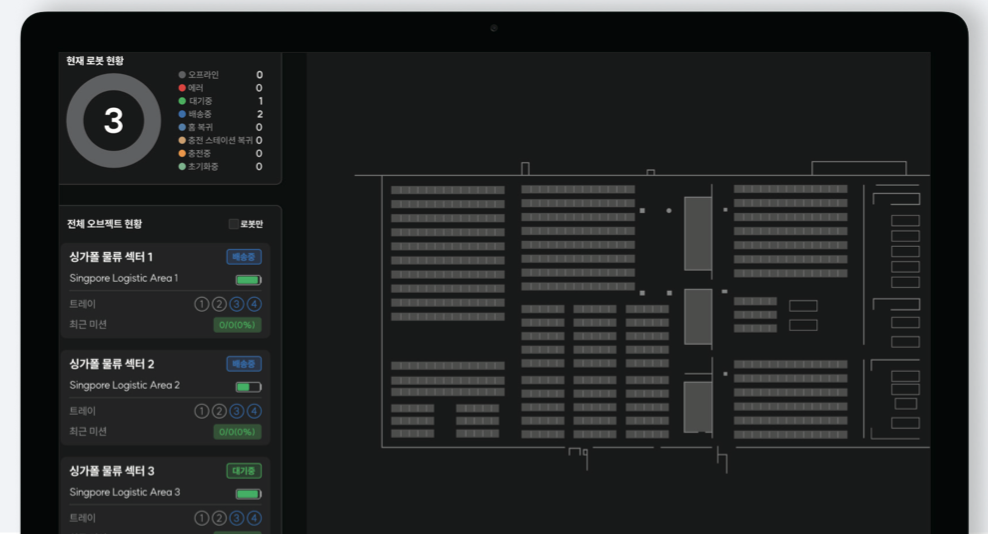
5️⃣ Industry-Specific Modular Design (AMR Technology)
AMRs (Autonomous Mobile Robots) are no longer just tools for material transport. They have become a key enabler of smart factory implementation. Since each industrial environment has its own workflows and operational constraints, a single AMR model cannot meet every need. This makes customized, application-specific AMR design essential for real-world deployment.
To address this, Polaris3D’s SMAR series is built on a drive platform (Mobility Module) called M2. This platform supports a variety of customizable service modules for different applications. Such a modular approach enables the creation of tailored AMR solutions based on operational tasks, space constraints, and system integration needs.
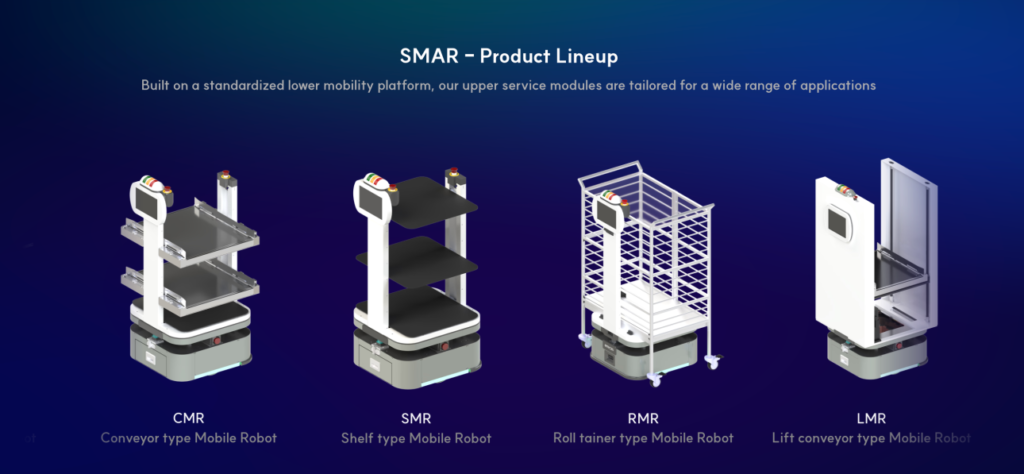
📌 AMR Technology Trends Beyond 2025: Key Takeaways
Autonomous Mobile Robots (AMRs)are rapidly evolving from simple task automation tools into flexible, intelligent mobility solutions powered by AI. Technologies such as deep learning, 5G connectivity, system integration frameworks, and international safety standards are driving the evolution of AMRs. These advancements are broadening their scope and potential across various industries.
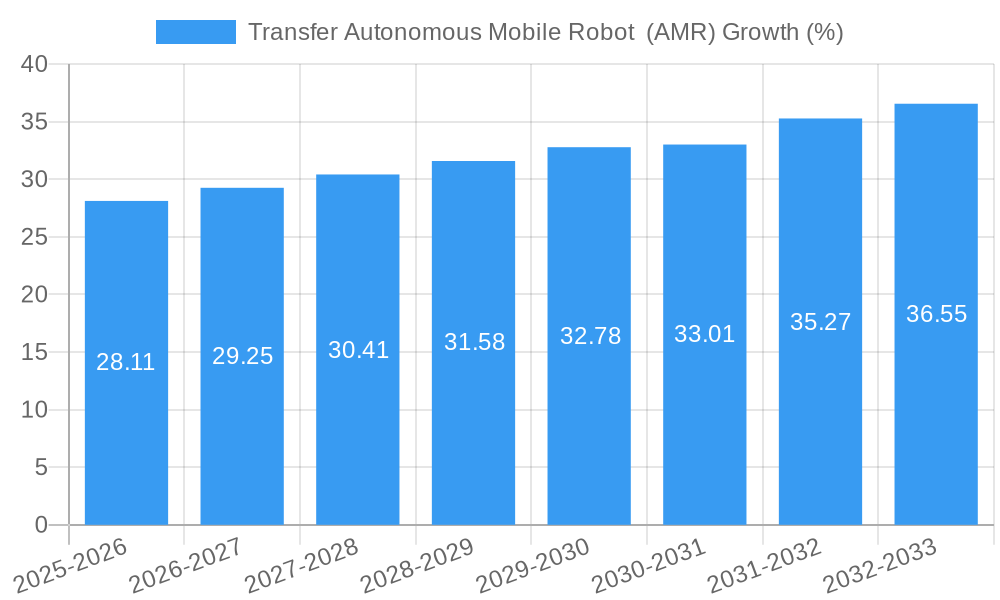
These technological advancements go beyond mere performance improvements. They are also expanding the real-world applicability of AMRs-reducing total cost of ownership (TCO) and boosting return on investment (ROI) across industrial operations.
| Category | Key Highlights |
|---|---|
| AI & ML Integration | Evolving beyond SLAM to deep learning–based perception and reinforcement learning–driven decision-making. Adoption of generative AI is increasing. |
| Enhanced Safety Standards | Global and industry-specific safety regulations will tighten in 2025. Certification and reliability will be key to competitive advantage. |
| 5G Connectivity | Enables high-speed data transmission, real-time map updates, and seamless integration with collaborative robots. |
| System Integration & Standardization | Focus on data and communication standardization to ensure cross-system compatibility. AMRs are expanding their role as integrated solution providers. |
| Outdoor AMR Deployment | Growth in AMR applications for agriculture, security, and delivery. Greater emphasis on durability and network reliability. |
Polaris3D: Leading the Future of AMR Through Integration, Standardization, and Scalability
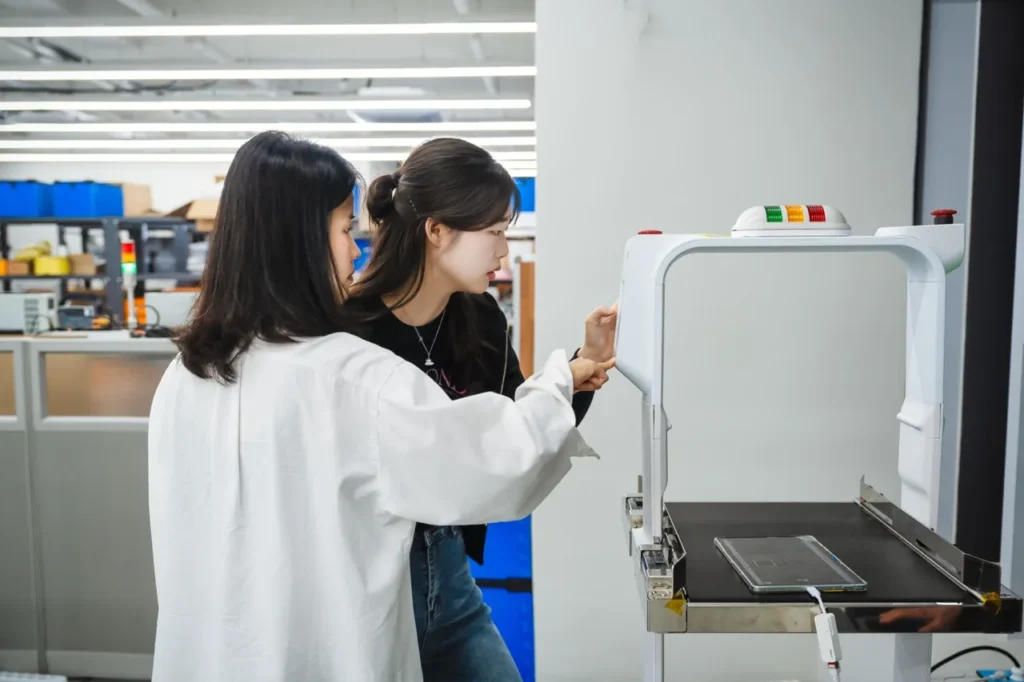
The AMR industry is set for explosive growth beyond 2025, driven by advances in technological integration, standardization, and system scalability. At this pivotal moment, Polaris3D is establishing a clear direction as a robotics company offering turnkey solutions across R&D, design, and manufacturing.
Polaris3D has already demonstrated the feasibility of end-to-end technology convergence and system integration. This is made possible through its proprietary autonomous mobility module, the integrated control system Nepler, and a modular AMR architecture tailored for diverse industrial environments. Additionally, Polaris3D’s AMRs feature LFP battery–based safety designs and advanced AI-powered perception and control algorithms, all developed to meet increasingly stringent global safety standards.
Polaris3D is turning key industry challenges into technological opportunities. With this approach, the company is well-positioned to become a trusted partner in building sustainable smart logistics and manufacturing environments—delivering differentiated AMR solutions through a platform-driven service strategy.










